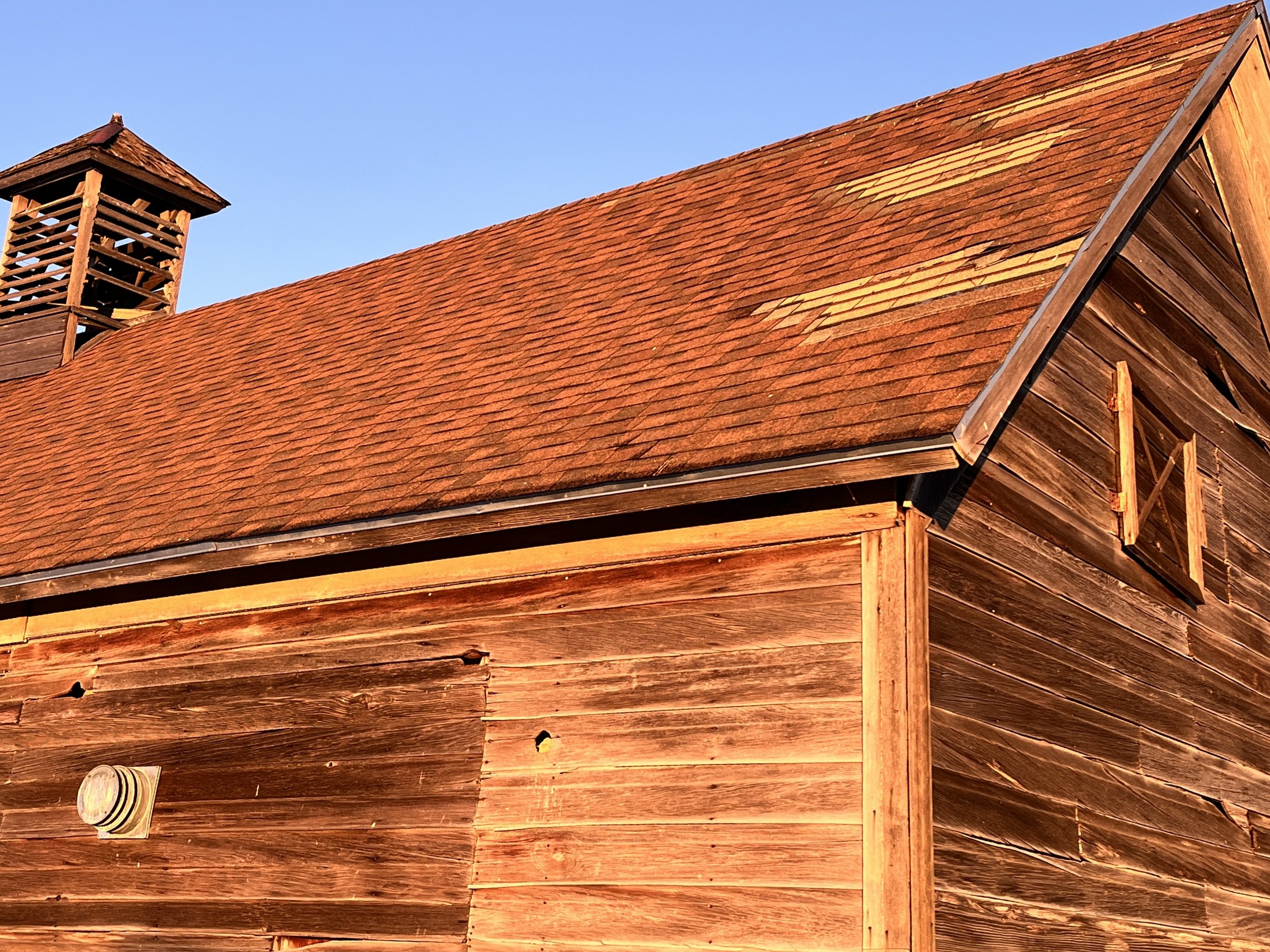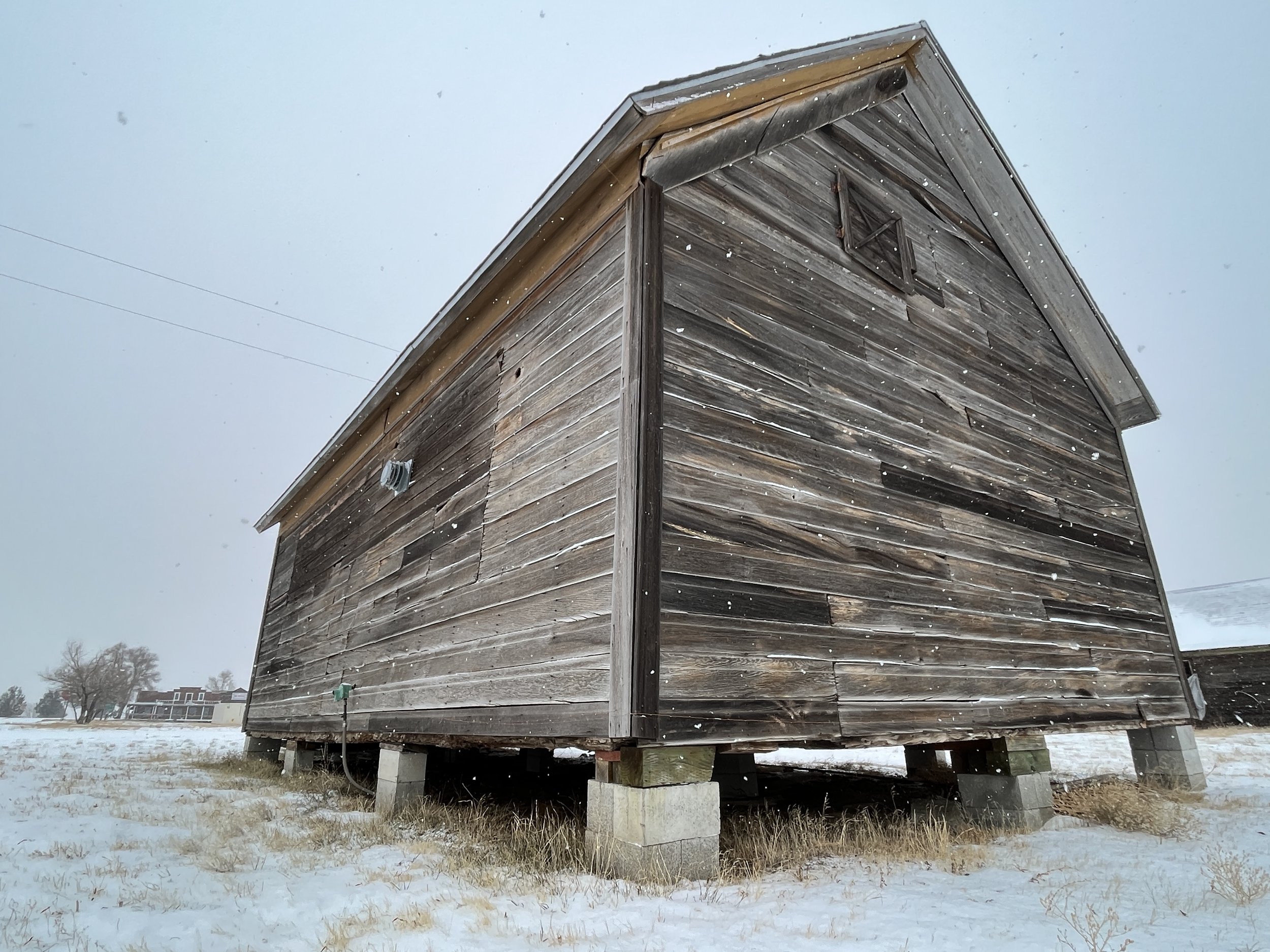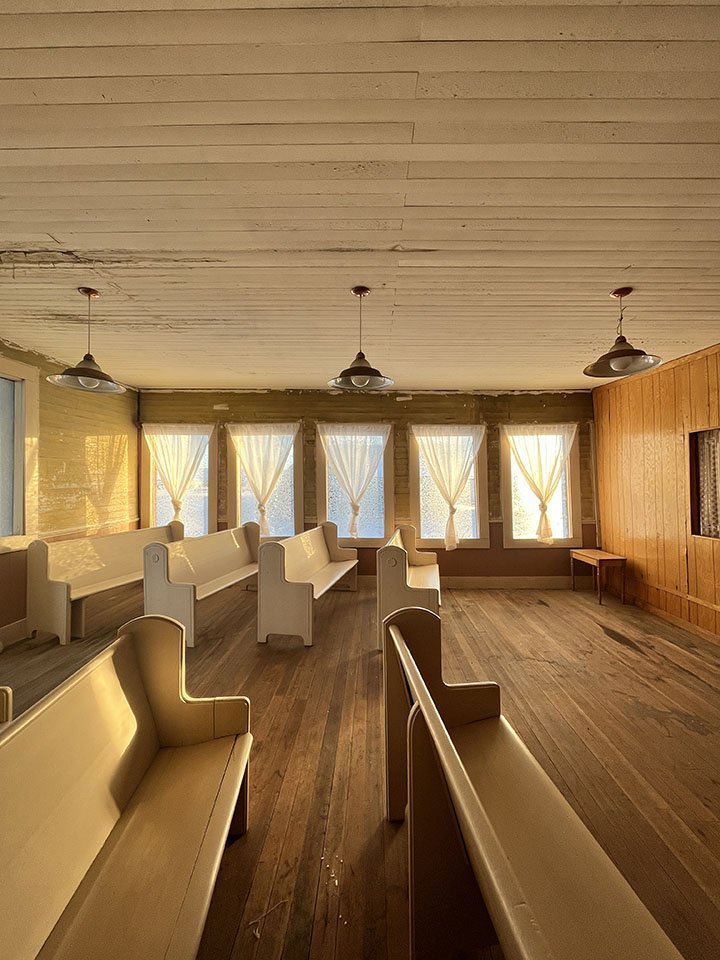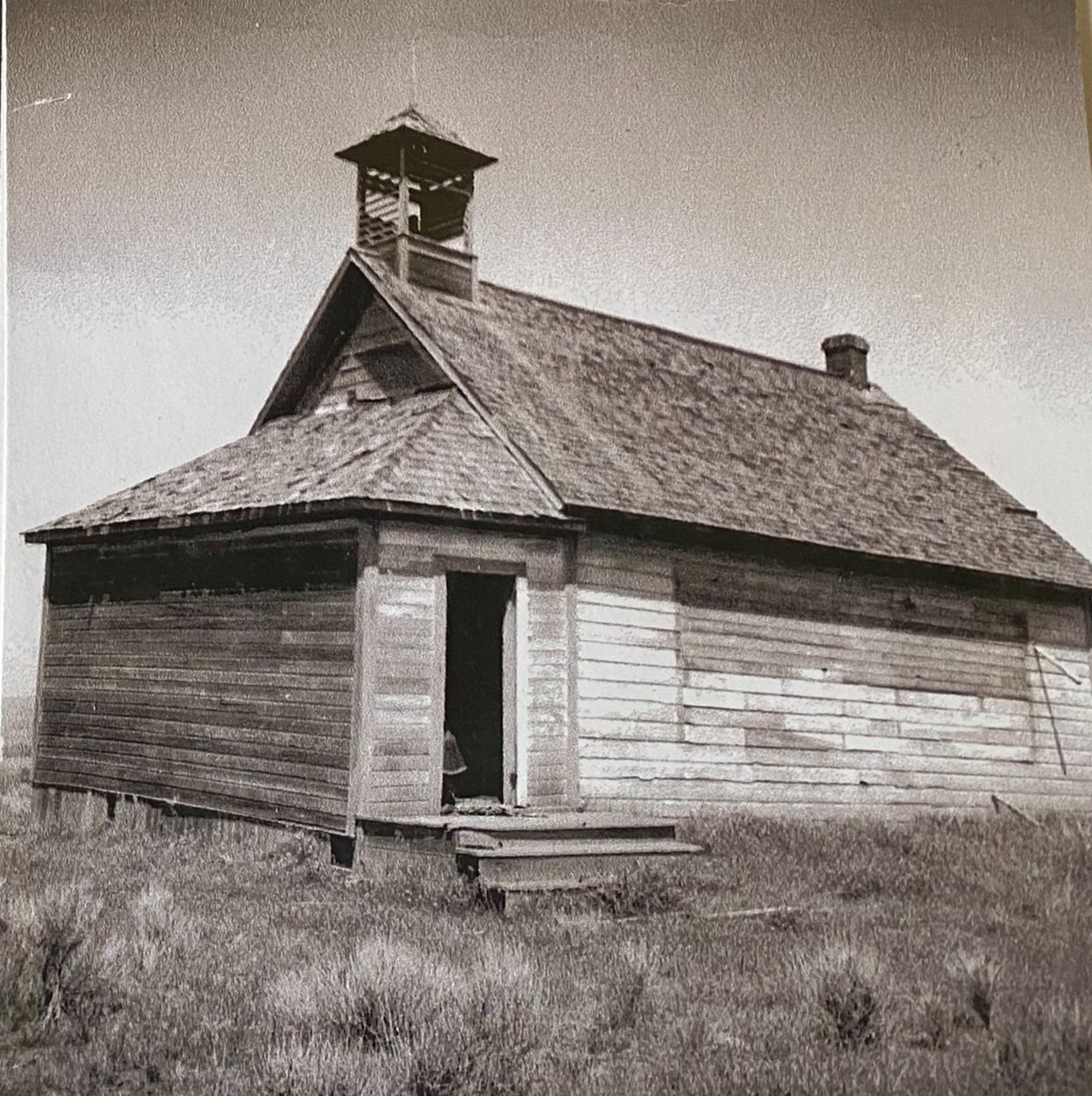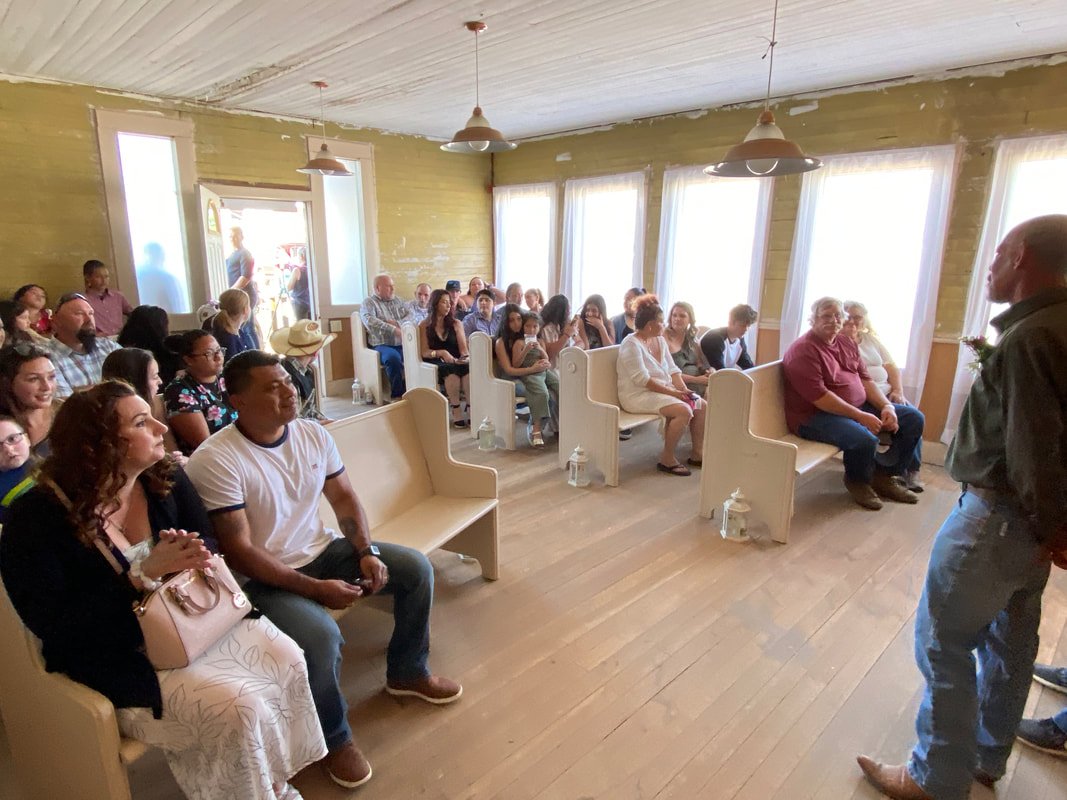Revitalizing the Shaniko Chapel
Once complete, the newly-revitalized Chapel will host community & music events. It will provide tourism education to its many visitors, and offer Western weddings to couples looking for a unique experience.
The historic Shaniko chapel boasts a rich history – its life began in 1897 as a single-room schoolhouse in the neighboring ranch region of Bakeoven. It wasn’t until 1964 that the building was transported 9-miles up the highway to Shaniko to operate as the town’s only chapel.
Breathing new life into the Chapel opens up the opportunity to share its past with visitors – and it paves a path to creating new memories for future generations.
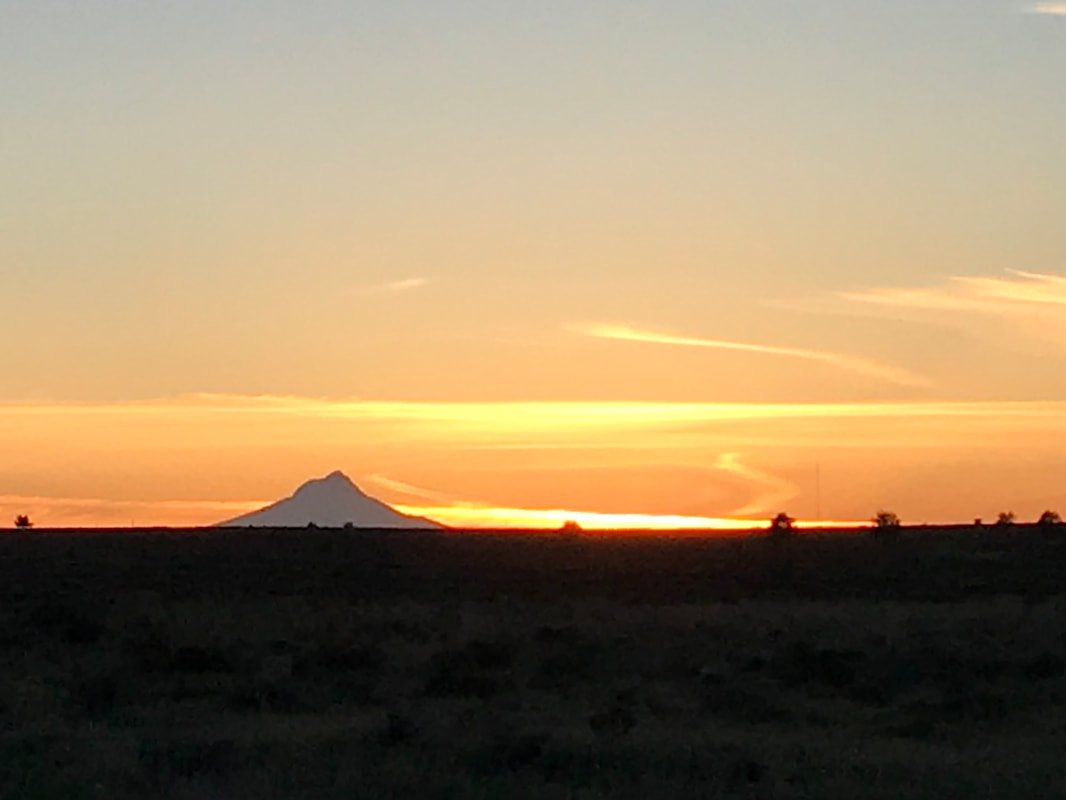
About the Project
-
In Shaniko’s early days, it proudly served as a booming trade center with a bustling population of 600. Although the population has since thinned to 35, Shaniko’s residents are proud of their city’s past. They find great satisfaction in sharing Shaniko’s story with the many tourists who stop into town.
In 1897 the railroad chose Shaniko for its main depot station, which did wonders for commerce. Shaniko became a popular stopping-point for travelers, serving a social necessity for traders yearning for entertainment after weeks on the road.
Shaniko’s community in the early 20th century centered around sheep – by 1901, 4-million pounds of wool were moving through Shaniko’s warehouses annually, and Shaniko became known as the Wool Capital of the World.
Sadly, the livelihood didn’t last more than a decade. In 1910, the rail line was modified to bypass Shaniko, and that same year a number of devastating fires took the town by storm.
-
Most who visit don’t realize the chapel began its life as a school nine miles outside of Shaniko. In 1897, sixteen-year-old Ada Bell served as the Schoolhouse’s first teacher. Ada lived with the families of her students for each of her 3-month teaching terms, returning to her hometown of The Dalles (a 40-mile stagecoach journey) for her high-school studies when the Bakeoven School closed for each season – an impressive balancing act for a young girl of sixteen.
The school’s first class had seven pupils of varying ages. Ada Bell reminisced about her first day of teaching in her diary: “I had attended a country school, but nothing like this! Never once had I imagined myself teaching in a room like this one: large rude desks, the floor and walls were of rough wood – no ceiling, and only three half-windows.”
The building changed hands in 1964 and was relocated to Shaniko, Oregon, where it would serve as the city’s only chapel and see hundreds of weddings through 1990.
We are looking to open the building back up for community events, music performances, and a haven for fellowshiping.
-
The Chapel revitalization timeline is projected to span 4 years from initial planning through to full completion. The scope entails 5 phases: Planning, Foundation & Structure, Roofing, Electrical Installation, and Water & Sewage Connections.
Currently in the initial phase, Shaniko Music Sanctuary is working closely with Hennebary Eddy Architects to develop preservation and foundation plans. Hennebery Eddy is an architecture, planning, and interior design firm in Bend, with focus on historic resources and net-positive design solutions.
This initial planning phase is arguably the most pertinent, as it will enable us to build an accurate timeline and budget. Shaniko Music Sanctuary plans to kick off the intensive planning process in July 2023 with site visits by structural engineers and planning specialists.
-
We want to keep Shaniko alive as a “living Ghost Town”. Without income from tourism, the locals who love this city so much will be faced with tough decisions. Revitalizing the chapel will pull visitors into town – folks who will buy goods at the general store, will browse for antiques at The Ravensnest, will purchase fuel at the gas station, and will stay a few nights at the RV Park. All of these small purchases make a huge impact on Shaniko’s well-being.
We also anticipate a positive impact on Oregon tourism. Travel Oregon lists Shaniko on its website of Oregon attractions: “Shaniko is one of Oregon’s most popular ghost towns, set on the sagebrush plains of Central Oregon. Among the haunted remnants of what was once the ‘Wool Capital of the World’ are the weathered structures of a historic hotel, a jail and a schoolhouse. Remaining residents are surprisingly spirited, putting on several annual events.”
-
A one-way trip to buy groceries requires 45-minutes in the car, as do trips to the doctor’s office. The internet tends to lag, and getting repair technicians to come out to Shaniko takes some convincing. In a town with so few people and so few services, the sense of community is what keeps Shaniko thriving.
On Sunday mornings before the high-desert wind kicks up, early-risers congregate at Richard’s for eggs, coffee, and conversation. Every second Saturday in the summertime, Salina holds a town potluck: live music, town gossip, and an escape from the hot summer heat. Wednesday evenings, the volunteer fire department meets for training. The dedicated team of four focuses on wildland fire preparation and trauma response training.
These social get-togethers are the glue of the town, nodding to the original social atmosphere of Shaniko in the early 1900’s.
-
Campers are drawn to the brilliant Milky Way lighting up the dark sky behind the Wool Barn. Motorcycle and classic car clubs make Shaniko an afternoon stopover each year before continuing the cruise up highway 97. Adventure-seekers pop into Shaniko’s ice cream shop before heading to the colorful Painted Hills. And some simply stop in Shaniko to get gas – panicked by a fuel gauge dipping into the red for the past 50 miles and nowhere to fill up.
Even though Shaniko is 45 miles from services, it sits on the only north-south throughway in the middle of the state. This means Shaniko sees a lot of traffic, despite its remote location.
Regardless of the draw, visitors get caught up in the tiny whirlwind of Shaniko life and stick around to explore. They often find themselves on walking tours led by locals. And when they finally do leave town, they leave not as a visitor, but as a new member of the community.

We are Prioritizing the Following Repairs
-
FOUNDATION: $20,000
The chapel's foundation needs a full rebuild. It is currently sitting on cinder blocks and is beginning to list dramatically.
-
STRUCTURE: $20,000
Shaniko Chapel still boasts her original flooring and walls. Given an inspection, we will shore up the integrity, while preserving the historic characteristics.
-
ELECTRICAL: $20,000
The building has no electricity. In addition to lighting, we want to bring temperature control to the Shaniko Chapel.
-
WATER & SEPTIC: $30,000
There is currently no water or septic. We need to offer basic conveniences to ensure the chapel is accessible to all.
-
ROOFING: $10,000
The integrity of roof is starting to deteriorate.. It has begun to show signs of leaks and will need replaced to protect the interior from weathering.
-
LANDSCAPING: $10,000
Shaniko, Oregon is an extremely windy high-desert town. Proper landscaping will protect the chapel from the elements.




